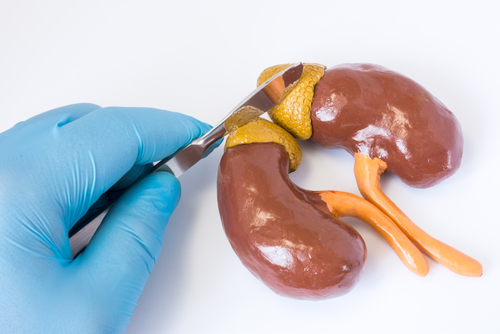ACTH Testing, MRIs Recommended for Predicting Nelson’s Syndrome After Bilateral Adrenalectomy, Study Says
Written by |

People with Cushing’s disease who have a bilateral adrenalectomy should be regularly assessed for their adrenocorticotrophic hormone (ACTH) levels, and undergo periodic magnetic resonance imaging (MRI) analysis of residual tumors, to help predict and possibly detect Nelson’s syndrome, according to a new study.
The findings also showed that increased urinary cortisol at the Cushing’s diagnosis may predict Nelson’s syndrome development.
The research, “Long-term outcome after bilateral adrenalectomy in Cushing’s disease with focus on Nelson’s syndrome,” appeared in the journal Archives of Endocrinology and Metabolism.
Total bilateral adrenalectomy — the removal of adrenal glands — is one of the options for Cushing’s patients with persistent or recurrent disease, and is associated with successful control of cortisol levels.
However, this procedure may lead to the development of Nelson’s syndrome, which is characterized by enlargement of the pituitary gland and large tumors known as adenomas. One hallmark of the disease is progressive increases in ACTH levels, which become abnormally high.
Studies on predictive factors for developing Nelson’s syndrome have led to contradictory results. To learn more, a team at the University of Buenos Aires, in Argentina, assessed clinical, biochemical, and imaging findings to compare Cushing’s disease patients who developed this complication after adrenalectomy with those who did not.
The scientists analyzed the clinical records of 13 people who underwent the procedure between 1974 and 2011. These patients were followed over a mean of 14 years at Hospital de Clínicas of the University of Buenos Aires.
The mean age at Cushing’s diagnosis was 28 years. All patients received standard replacement therapy with hydrocortisone and fludrocortisone following adrenalectomy.
The surgery was performed by laparoscopy in four patients (31%) and by an open approach in nine (69%). One patient (8%) immediately experienced bleeding, and two (15%) sepsis — a life-threatening inflammation in the whole body; all three had undergone surgery by an open approach. Long-term complications included adrenal crisis in two patients (15%) and sepsis in four (31%).
Following surgery, six patients (46%) developed Nelson’s syndrome over a mean of 24 months. The seven patients (5 women) not developing Nelson’s syndrome had a similar age as those who did. The mean duration of Cushing’s syndrome prior to adrenalectomy also was not significantly different between the two groups.
What was different was the level of urinary cortisol. At diagnosis, those levels — assessed using 24-hour urinary free cortisol (UFC) tests — were significantly higher in the individuals who developed Nelson’s syndrome than in those who did not.
“[W]e found that higher 24-hour UFC levels before [surgery] could be a predictive factor of NS [Nelson’s syndrome] occurrence,” the scientists said. “Therefore, it should be evaluated and prioritized in patients considered for TBA [total bilateral adrenalectomy].”
Three people, all subsequently developing Nelson’s syndrome, had macroadenomas — meaning tumors with a maximum diameter larger than 1 cm — at diagnosis. Only one patient, whom researchers said did not develop Nelson’s syndrome, had no visible tumor on the MRI scans.
All but one patient had persistent Cushing’s disease before surgery. Four people who experienced Nelson’s syndrome, and three who did not, received radiotherapy prior to adrenalectomy.
Importantly, half of the patients in the Nelson’s syndrome group, and one (14%) not developing the disorder, were found to have residual tumors before surgery — as assessed with MRI — which is a statistically significant difference.
In contrast, no difference was found in the doses of hydrocortisone replacement therapy post-surgery. At one year after the procedure, the median ACTH values were significantly higher in the patients who developed Nelson’s syndrome.
“Currently, in most studies, this is probably the best-validated predictive factor for the occurrence of NS, and may be related to tumor progression,” the team said.
All patients with Nelson’s syndrome developed skin hyperpigmentation over follow-up. One patient died three years following emergency surgery due to tumor bleeding and diverse pharmacological treatments. Only two patients developing Nelson’s syndrome achieved remission: one following transcranial surgery and the other upon conventional radiotherapy.
“The presence of tumor remnants before adrenal surgery and the increase in ACTH levels in the first year … are two predictive factors that should be considered in these patients,” the scientists added.
Noting that Nelson’s syndrome usually occurs within three years post-surgery, the researchers recommended careful initial follow-up.
“ACTH level monitoring and periodic MRI scanning should be performed more frequently for earlier detection of this complication,” they said.
Taking into account reports of Nelson’s syndrome occurring as late as 24 years after surgery, the investigators also said “lifelong surveillance may be justified.”





